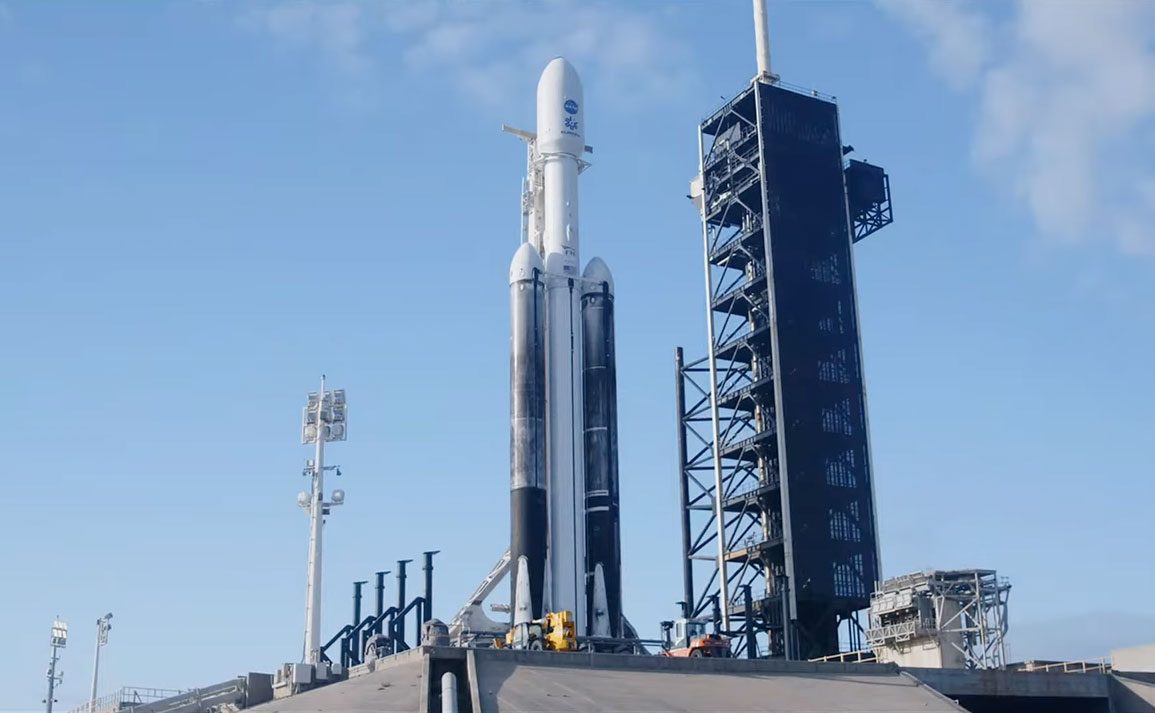NASA is preparing to launch its first mission to study an ocean world beyond Earth on Monday, Oct. 14, 2024. The Europa Clipper mission, valued at $5 billion, will explore Jupiter’s moon Europa, which is believed to have a salty ocean beneath its icy surface.
The spacecraft will be carried into space by a SpaceX Falcon Heavy rocket from Kennedy Space Center in Florida. Liftoff is scheduled for 12:06 p.m. EDT, and the launch will have a narrow 15-second window for success. There’s a high probability of good weather, with a 95% chance of favorable conditions.
Originally scheduled for Oct. 10, the launch was postponed due to Hurricane Milton, which caused power outages and damage across Florida, including at Kennedy Space Center.
Despite the storm, the SpaceX and NASA teams successfully protected the launch hardware and resumed preparations once the center reopened. NASA Associate Administrator Jim Free acknowledged the challenges posed by the hurricanes, extending sympathies to those affected.
NASA will offer several options for the public to watch the launch live online. The primary webcast will be available on NASA+ and YouTube, starting at 11 a.m. EDT, with additional streams in Spanish. Space.com will also host the live broadcast, and SpaceX may provide its own stream via its X (formerly Twitter) page, but is currently directing viewers to NASA’s coverage.

The Europa Clipper mission will take nearly 10 years to complete. The spacecraft will spend the first 5.5 years traveling to Jupiter, and the remaining time performing close flybys of Europa to study its potential habitability.
The probe will utilize gravity assists from Mars in 2025 and Earth in 2026, to arrive at Jupiter in April 2030. Once there, it will conduct a four-year study of Europa’s ice-covered ocean using a suite of scientific instruments.
Among the mission’s objectives is to investigate whether Europa’s ocean could support life. While Europa Clipper will not directly search for life, it will analyze the moon’s water, organic materials, and other conditions essential for life.
The probe will employ radar to penetrate Europa’s ice and instruments to study water plumes previously detected by the Hubble Space Telescope, along with capturing detailed images of the surface.
Europa Clipper is NASA’s largest planetary spacecraft to date, with its solar arrays extending to the size of a tennis court. Because of the mission’s extreme distance, SpaceX will not attempt to recover the Falcon Heavy’s boosters to maximize the rocket’s performance. This sacrifice was praised by SpaceX as a worthy trade-off, as the mission could reveal whether life exists in our own solar system.
The launch sequence will follow a precise timeline, beginning with fueling and liquid oxygen loading about an hour before liftoff. After a series of final checks and countdown procedures, the Falcon Heavy rocket will ignite its engines and launch the spacecraft. Deployment of Europa Clipper is expected just over an hour after liftoff, after which the spacecraft will unfold its solar arrays during a six-hour process.
If the Oct. 14 launch is delayed, backup windows are available on Oct. 15 and Oct. 16, with similarly favorable weather forecasts. Should further delays occur, NASA and SpaceX have until Nov. 6 to launch without impacting the spacecraft’s scheduled arrival at Jupiter in 2030. Each delay would affect gravity assist timings but not the overall mission goals.
Once the mission reaches Jupiter, Europa Clipper will provide crucial data on the moon’s ocean, offering new insights into the potential for life beyond Earth. The results will contribute to the broader study of astrobiology and the exploration of ocean worlds in our solar system, further expanding our understanding of the universe.

